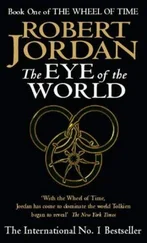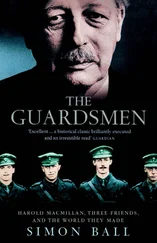1 ...7 8 9 11 12 13 ...36 Cook sailed close by the coast, close enough for Banks to see the land with the help of his telescope, and even make out the kind of trees that grew and the birds that populated the shore. Though he saw fires, he didn’t see any people. On 23 May, Banks got his first opportunity since leaving Botany Bay to collect. While he was away, those still on board spotted nearly twenty local people gathering on the beach though they soon retreated into the surrounding forest.
For the next few weeks the ship made its way up the coast, stopping infrequently and giving little time for Banks and Solander to collect much. Nothing remarkable was noted but then, ‘scarce were we warm in our beds when we were calld up with the alarming news of the ship being fast ashore upon a rock’.[50] The ship, now inside the Great Barrier Reef, to the northeast of a point of land Cook named Cape Tribulation, had ‘struck and stuck fast’, and was being cut into by coral.[51]
The pumps were worked to their limits and everything was done, including throwing overboard much of the ballast and all the guns on the deck, to float the ship. Banks confessed that he was on the point of packing everything up he could save and ‘prepared myself for the worst’.[52] By a combination of luck and skill, the ship, still leaking, was made to sail and Cook, carefully avoiding shoals and shallow water, began looking for somewhere on the shore where he could repair it. On 17 June, Cook, having spotted a likely place, was finally able to moor the ship in the mouth of a river.
It took seven weeks for the repairs to be made in the inlet of what Cook came to call Endeavour River (present-day Cooktown, Queensland). Banks and Solander did very well, even better than at Botany Bay: altogether they described almost 1000 species.[53] Cook had his mind on other matters. The ship was almost repaired and it was time to leave. On 4 August, Cook moved the ship from its mooring. For almost three weeks, he gingerly steered it northward, mostly between the coast and the Great Barrier Reef, avoiding shoals and visible coral formations until, on 20 August, the Endeavour reached the northernmost point of land, which Cook named York Cape (now Cape York).
Cook was close to waters that had been well charted by earlier European explorers. One important question remained unresolved, however: was the northern part of New Holland, where the ship now stood, attached to the southern coast of New Guinea as shown on several contemporary maps; or were these two land masses separated by a channel or a strait, supposedly discovered by the Spanish explorer Luis Vaez de Torres in 1606, the track of which was shown on Dalrymple’s map and which Cook believed existed?[54] As he sailed around the Cape, clinging to the coast, there was always water to starboard: the only land he saw was the coast on his port side. Cook concluded that he was in a strait, to which he gave the name Endeavour and which formed a part of the track Torres had taken more than one hundred and fifty years earlier. As he kept sailing in a westerly direction, the strait widened and led directly into the Arafura Sea and eventually to the heavily populated island of Java.
Batavia (present-day Jakarta), where the Endeavour anchored on 9 October 1770, had been the centre of the Dutch East India Company’s Asian trade network since the early seventeenth century, its harbour frequently teeming with European ships on their way to and from the East Indies.[55] Here, Cook could ensure that the ship would be expertly repaired in order for it to make it back safely to England. He could send his first despatches and a copy of his journal to the Admiralty, and the ship’s company could, for the first time since they were in Rio de Janeiro almost two years earlier, write precious letters home with some certainty that they would get to their destinations – it was from letters written here that Londoners, reading reports in the newspapers, first learned of the Endeavour ’s safe arrival in Batavia.[56] Unfortunately, for the ship’s company, they were now exposed to a range of tropical diseases against which they had no protection. Many became ill, including Banks and Solander. The surgeon, William Monkhouse, was one of the first to die, followed quickly by his mate; then Charles Green’s servant and three more men.
On 25 December 1770, the Endeavour was ready to resume its voyage home. ‘There was not I believe a man in the ship but gave his utmost aid to getting up the Anchor, so completely tird was every one of the unwholesome air of this place’, wrote Banks.[57]
The worst fatalities, however, happened when the ship was back at sea heading for the Cape of Good Hope. On 24 January 1771 Herman Spöring died, who had acted as Banks’s secretary and also produced some fine drawings; two days later, Sydney Parkinson died and two days after that it was Charles Green’s turn. Banks’s accompanying suite, which had already been reduced by the earlier deaths of Richmond, Dorlton and Buchan, was reduced to three. Solander, Briscoe and Roberts were all that remained of the original eight. There were also deaths among the ship’s company and these continued as the ship made its way through the Atlantic.
On 14 March the ship anchored in the harbour of Cape Town. A month later they were on their way again and after a short stay at the British East India Company’s island of St Helena, Cook set a course for the English coast which he hoped to reach without stopping en route. The survivors were desperate to get home.
At three o’clock on 12 July 1771, a little short of three years on its circumnavigation, the Endeavour , the first British scientific voyage of its kind, landed on the coast of southern England at Deal.
Cook’s achievements were many. He was both a skilled navigator and a superb surveyor and cartographer. He not only discovered that New Zealand was formed of two islands and that the east coast of New Holland, from Point Hicks in the south to Cape York in the north, was continuous, but he surveyed the coasts and produced the first charts of both places. During the voyage of the Endeavour , besides producing these entirely new charts, he improved upon and corrected those already existing of Tahiti and the area around Cape York.[58]
But it was not Cook who was fêted on the Endeavour ’s return.
Banks, cutting a more dashing figure, and Solander, depicted as fatherly and studious, were immediately taken into the nation’s heart as heroes. They were the talk of the town and their company was much sought after.
The most eminent person eager to meet Banks was King George III. The meeting happened on Friday, 2 August 1771, at St James’s. Francis Seymour Conway, Lord Beauchamp, who knew Banks from Eton and Oxford, and whose father was the Lord Chamberlain, performed the introduction (Banks and Beauchamp would meet again many years later under very different circumstances).[59] The newspaper articles described nothing of what happened that day between the King and Banks apart from commenting that ‘[Banks] was received very graciously.’
The son of Frederick, the Prince of Wales, who had died in 1751, George ascended the throne in October 1760, on the death of his grandfather George II. George III was five years older than Banks and he had taken a keen interest in the voyage of HMS Endeavour , supporting it ardently and committing £4000 of his own money to it.[60] So he had a stake in knowing what had been collected. London’s botanic community was certainly aware that the King was anxious to see Banks and Solander, even before they arrived.[61] Less than a fortnight after their first meeting, the King requested that both Banks and Solander, accompanied by Sir John Pringle – who at the time was Queen Charlotte’s personal physician, a leading member of the Council of the Royal Society and a friend of Banks and Solander’s – should meet him at his summer home in Richmond on Saturday for ‘a private conference … on the discoveries they made on their last voyage’.[62] As a member of the Council of the Royal Society, Pringle was very interested in the voyage of the Endeavour and would have been involved in aspects of the planning for the observation of the transit of Venus.[63] After the ship returned, Pringle met Banks and Solander, both separately and together, sometimes at his home and other times at Banks’s home in New Burlington Street, and on many other occasions, finding out about those aspects of the voyage that interested him most.[64]
Читать дальше












